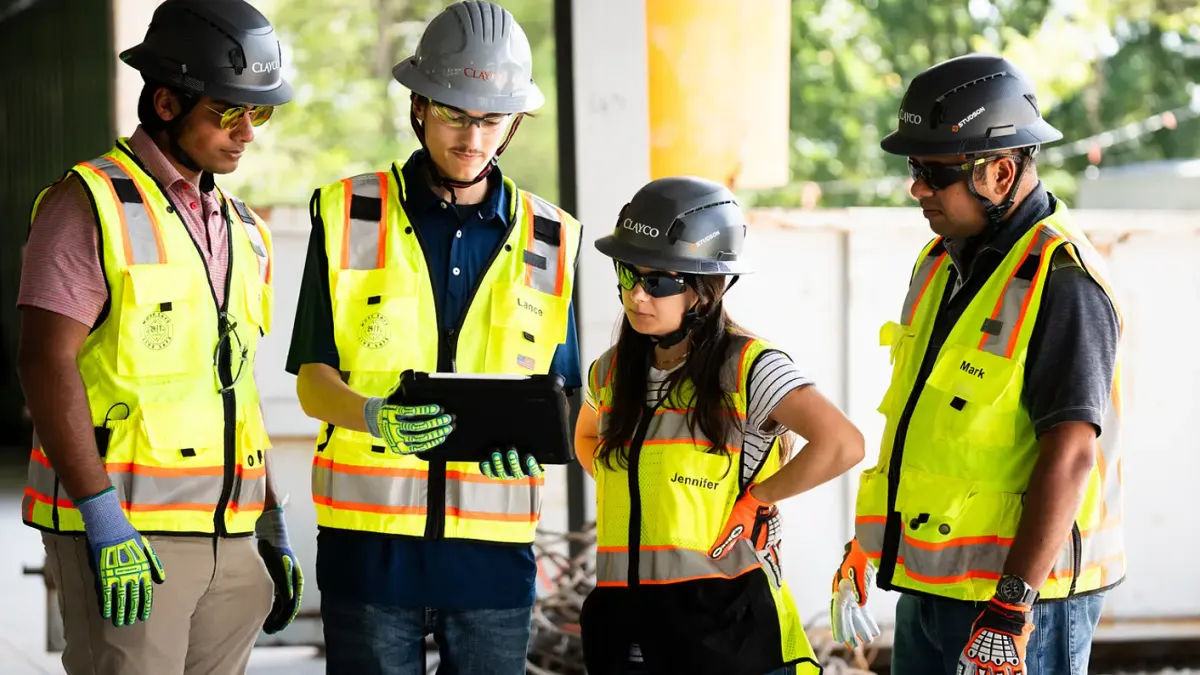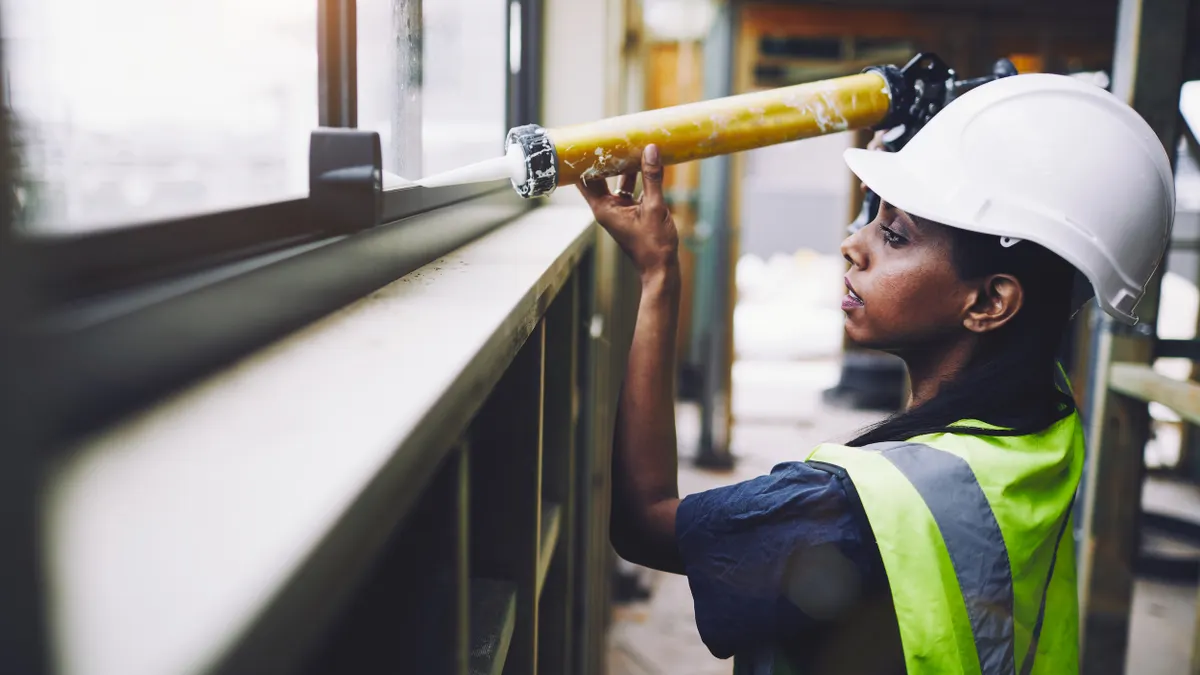Two Texas construction workers died from heat-related illnesses last month, a harsh reminder that even the toughest outdoor crew member is no match for the hot summer sun.
After a full day of road work in Houston in mid-July, Jasso Ramirez, 53, spent a week in the intensive care unit of a Harris County hospital before dying from hyperthermia. And 25-year-old Roendy Granillo, of Haltom City, near Fort Worth, died from heat stroke after falling ill while working on a residential construction crew.
Construction is a sweaty business, and for road crews, landscapers, builders and other outdoor workers, standing up to the heat is a job requirement, even on the hottest days of the year.
But when the heat causes profuse sweating, dizziness and more than a little discomfort, it’s time to get out of the sun, even if the work isn’t done.
Lessons from the job site
Construction workers have devised their own defenses against the beating sun.
In Houston, road worker Alonzo Conway told television station KPRC that despite the urge to wear as little clothing as possible on hot days, he and his crew dress in long pants, long sleeves and hats to prevent the sun from burning their skin. “I usually have on a T-shirt and it’s hotter with just a T-shirt,” Conway told the station. “The long sleeves protect your skin and keep you cool.”
During the first heat wave of the season for Grand Forks, ND, last week, saw operator Adele Aasen of Opp Construction told WDAZ Television that her crew stretches their normal three breaks per day to six — all in the shade.
The construction company’s chief safety director, David Opp, added that workers deliberately slow down, working at a “steady pace” rather than a quick one. And he advises them to “listen to your own body. Sometimes, if you feel thirsty, you’ve already gone too far.”
Other crews have tweaked their schedules so they arrive to work as much as three hours early so they can make enough progress before the sun reaches its hottest point of the day — and clock out early.
Some wear cool, wet rags around their necks. And all drink copious amounts of water throughout the day — or at least they are encouraged to by supervisors.
Still, Aasen notes, “You never get used to this kind of heat.”
What can happen
Three common causes of heat-related death and illness among outdoor workers are heat exhaustion, heat stroke and hyperthermia.
Heat exhaustion is a rapid overheating of the body. A crew member who is suffering from it is likely to be sweating heavily and to become extremely weak or fatigued, according to the Centers for Disease Control and Prevention. Other symptoms are dizziness; confusion; clammy, moist skin; a pale or flushed complexion; muscle cramps; an elevated body temperature; and fast, shallow breathing.
A worker suffering from these symptoms should immediately move to a cool, shaded or air-conditioned area and rest there while drinking lots of water. A cool shower or sponge bath will help regulate the body's temperature.
Heat exhaustion can lead to the similar but more serious heat stroke, which can be life-threatening. Heat stroke can reveal itself either as hot, dry skin or profuse sweating. Victims of heat stroke sometimes hallucinate or feel chills, even though it’s scorching hot outdoors. They often complain of throbbing headaches; become confused; and slur their speech.
Anyone who witnesses a co-worker or employee displaying these symptoms should call 911 right away, move the sick worker to the shade or indoors, and douse the person — clothes and all — with cool water.
Hyperthermia occurs when the body becomes extremely overheated. It’s not as rare in healthy, physically fit construction workers as it is in the elderly, children and those with heart disease, but when working under the sun, nobody is immune.
The most common symptoms of hyperthermia include fatigue, sudden dizziness and cramps, and it can lead to heat exhaustion and heat stroke.
The usual cause: dehydration. But drinking alcohol under the hot sun and some medications can make outdoor workers more susceptible to it.
As with heat stroke and heat exhaustion, the worker needs to be moved out of the sun immediately and cooled off with air conditioning or a dousing of cool water, and if the victim is able to swallow, be given plenty of water to drink.
Heat safety goes digital
The first step to preventing heat-related deaths and injuries is to be aware that they can, indeed, occur. Second: Use that awareness to head off tragedy.
To that end, the Occupational Safety and Health Administration has introduced a smart phone app that outdoor workers and their supervisors can use to gauge the heat index of their outdoor work site — and the risk that those crews face during any point of the day. The app’s latest version was updated in July.
The Heat Safety Tool app also delivers reminders to drink more water and take frequent breaks, and offers tips for staying safe in the blistering heat, like monitoring for signs of heat-related illnesses; requiring new employees who aren’t used to working under a punishing sun to gradually build up to a normal workload; and to take time to train every crew member about the signs and symptoms of heat stroke and hyperthermia.
English and Spanish versions of the free Android app are available from the Google play store, and the iPhone version can be downloaded from iTunes.
Regulating wellness
Every summer, OSHA re-issues a slew of heat-related safety tips and regulations to remind outdoor workers across industries about the risks of working under the sun.
The campaign’s slogan: “Water. Rest. Shade. The work can’t get done without them.”
In fact, doctors, outdoor workers and the government all agree those are the elements required for sparing outdoor crew members from heat-related illness and death.
OSHA has some specific recommendations:
- Drinking water at a temperature of 50 to 60 degrees should be abundantly available on every job site. OSHA suggests supplying disposable cups in convenient locations close to the job site.
- Anyone who works outside should drink four cups of water every hour when the heat index is 103 degrees or higher — when there is a high risk for heat-related illness.
- Workers should avoid soda, alcohol and caffeinated beverages, as they can lead to dehydration, even if they quench thirst.
- Employers should supply sunscreen for workers to wear, and remind them to apply it often.
- When the heat index rises to 103 degrees, crew supervisors should take additional measures to protect workers, including extra, required rest breaks, fewer strenuous tasks and lots of reminders about drinking water. The heaviest tasks should be scheduled for early morning.
- At the start of every hot day, supervisors should warn their workers about the dangers of overdoing it in the heat; how to protect themselves; and what to do if they or their co-workers display symptoms of heat stroke or exhaustion. In addition, every worker should know how to give clear directions to the job site in case someone has to call 911.
- At least one person on each job site should be especially knowledgeable about heat-related illnesses and know how to help someone in need.
- Designate shady spaces for breaks, and set up shade canopies over work areas where possible. Move as many jobs as possible to shady spots.
- Rotate workers so each one does a combination of lighter and heavy tasks and no one does constant, strenuous work in the heat.
- Assign each worker a buddy who will keep an eye out for symptoms of heat-related illness.
Additional recommendations from OSHA, in English and Spanish, can be found here.
For more informtaion on how to promote a culture of safety on your construction site, click here.



















